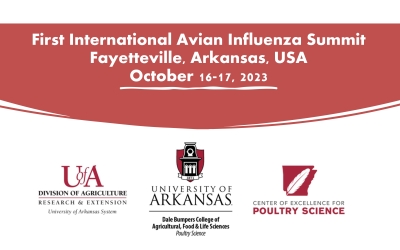New strategies for developing vaccines against the H5N1 avian influenza virus
Authors: Inkar Castellanos, Alberto Torres-Rodriguez, Victor M. Petrone-Garcia and Guillermo Tellez-Isaias
GMPC TOP
2023.
vol. 3, Iss. 1
pp:0-26
Doi: https://doi.org/10.51585/gtop.2023.1.0029

Abstract:
The H5N1 avian influenza virus poses a significant threat to poultry populations and human health, with sporadic outbreaks and the potential for pandemic emergence. Traditional vaccine development approaches have faced challenges in achieving broad-spectrum protection due to the high mutation rate of the virus. This abstract outlines novel strategies that have emerged to address these hurdles. Firstly, advances in reverse genetics technology have enabled the creation of recombinant vaccines, allowing for the precise manipulation of viral genes to enhance immunogenicity. These platforms facilitate the development of multi-valent vaccines capable of targeting multiple H5N1 strains simultaneously. Additionally, viral replicant or no-replicant vector vaccines employing non-pathogenic viruses as delivery systems show promise in eliciting robust immune responses against H5N1. Secondly, integrating computational modeling and artificial intelligence techniques in antigen design has accelerated the identification of conserved epitopes within H5N1, including MHC I, enabling the development of more effective and broadly protective vaccine candidates. Furthermore, using adjuvants, immune potentiators, antigen labeling for immune system cells, and novel delivery systems has enhanced the efficacy of H5N1 vaccines, providing more durable and cross-protective immunity. Moreover, implementing advanced manufacturing technologies of protein expression, such as cell-based (animal/plants/yeasts/bacteria) and virus-like particle (VLP) platforms, has streamlined production processes and increased vaccine accessibility. These platforms offer scalable and adaptable solutions to meet global demands during outbreaks and potential pandemics. Lastly, incorporating one health approach, emphasizing collaborative efforts between human, animal, and environmental health sectors, is crucial for comprehensive pandemic preparedness. Surveillance systems, early warning mechanisms, and rapid response strategies are integral to a proactive defense against H5N1 outbreaks. In conclusion, this abstract highlights the promising strides in developing vaccines against the H5N1 avian influenza virus through innovative approaches. These strategies, ranging from advanced genetic engineering techniques to cutting-edge computational modeling, offer a comprehensive toolkit for achieving broader and more durable protection against this formidable pathogen. By synergizing these advancements with a holistic health framework, we can significantly enhance our ability to mitigate the impact of H5N1 outbreaks on animal and human populations.
Keywords:
Influenza, Vaccines, Multi-valent vaccines, Virus-like particle, Epitopes, MHC-I
Statistics:
Article Views: 1255
PDF Download: 8